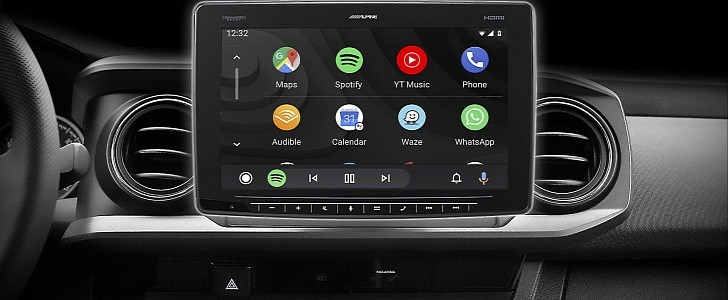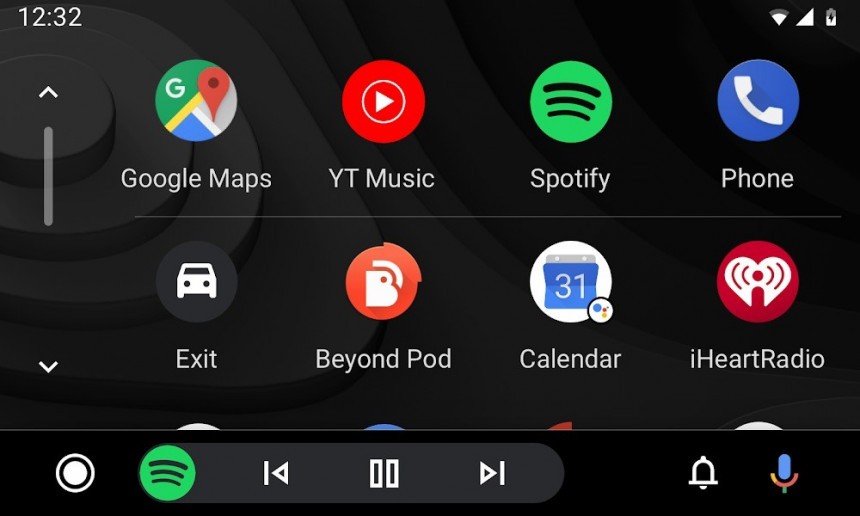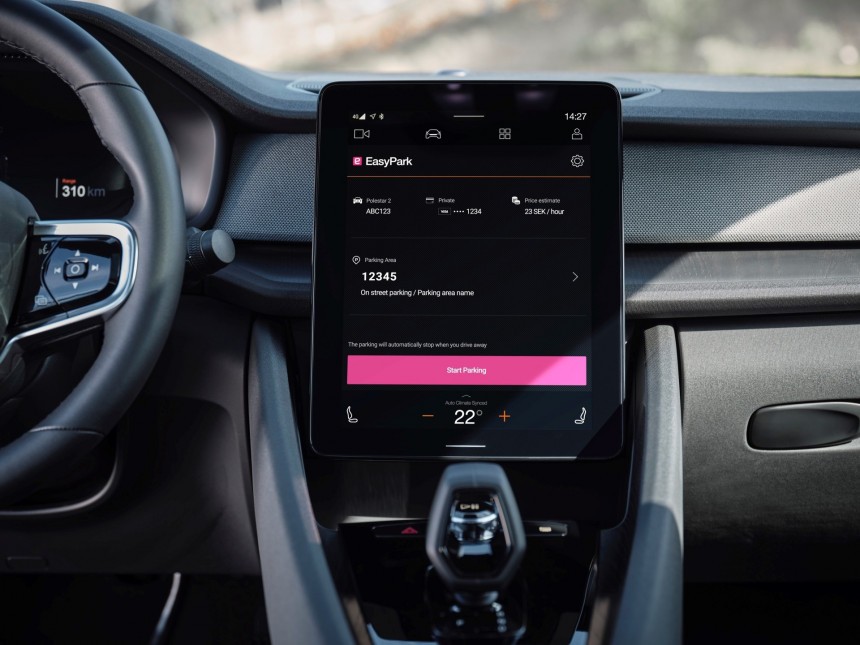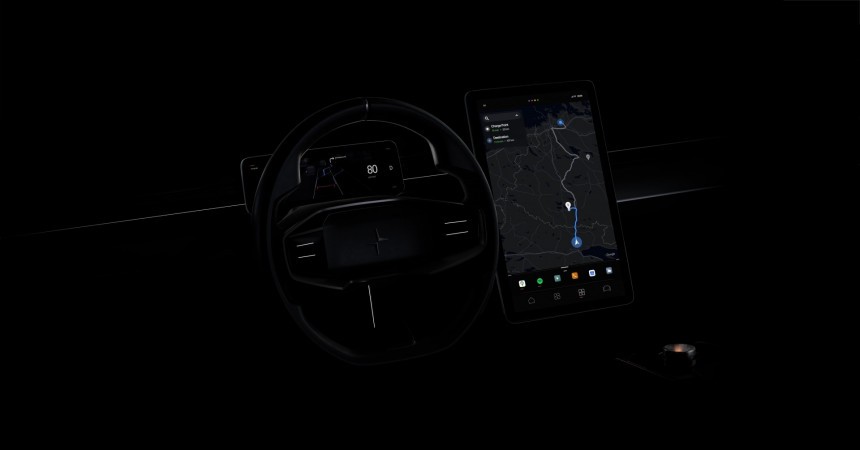Technology giants are all eyeing an expansion in the car industry, but while Apple and Xiaomi are spending big on their own electric vehicles that would make these companies direct competitors to the likes of Ford and Volkswagen, Google is betting big on services to step into the automotive sector.
And to do this, Google is offering multiple solutions, two of which bring the Android experience to the larger screen in the cabin.
The first of them is Android Auto, and it works with the help of an Android device. As soon as the head unit offers Android Auto support, all you have to do is connect an Android phone to the car using a cable or wirelessly, and that’s pretty much it.
The second is Android Automotive, a stand-alone operating system that’s offered natively on head units, therefore offering a more advanced experience with deep integration of Google services, including Google Maps and Google Assistant.
As compared to Android Auto, Android Automotive sports more complex capabilities thanks to the integration with the systems in the car. Google Assistant, for example, can control the air conditioning system, while Google Maps can check the mileage and automatically provide directions to the closest gas or charging station.
At the first glance, Android Automotive seems to be Google’s big bet in the automotive market, but this doesn’t necessarily mean Android Auto is no longer worth our love. In fact, Android Auto is in many regards better than Android Automotive, and below you’ll find the top three reasons why Google shouldn’t even think of giving up on this solution anytime soon.
So for example, even old cars can be upgraded with Android Auto support using an aftermarket head unit. There are plenty of companies offering such solutions out there, including Sony, Kenwood, Pioneer, Alpine, and others, so it’s nearly impossible not to find a receiver that fits your car and comes with Android Auto support.
In many cases, the installation of such systems is a matter of minutes, though car owners who aren’t necessarily tech-savvy should just go to a service center for the whole thing.
The cost of a new head unit is pretty low as well, as some no-name aftermarket receivers cost only $199.
Android is currently the number one mobile platform out there, and some third-party statistics put it at 80 percent market share.
In other words, 8 in 10 people out there have an Android phone, and given Google’s operating system comes with Android Auto pre-loaded at OS level, it’s extremely convenient for everybody to just connect their mobile device to their cars.
All they need is a cable, and most drivers already have one given pretty much everybody charges their phones in their cars.
Google itself has recently revealed that over 100 million cars out there run Android Auto wirelessly, and this figure concerns only cars where such capabilities were offered installed from the factory without taking into account vehicles with aftermarket head units.
One of the reasons for this major increase is the low price of installing Android Auto and CarPlay in a new car. It’s believed the module required to power Android Auto and CarPlay doesn’t cost more than a couple of bucks, while the licensing fees, at least in the case of Apple’s system, are about $50, though they aren’t paid per each vehicle but for the right to use the software on a specific number of cars.
Android Automotive, on the other hand, requires more complex hardware whose costs are bigger, so overall, Android Auto just seems to be the obvious choice for carmakers too.
The first of them is Android Auto, and it works with the help of an Android device. As soon as the head unit offers Android Auto support, all you have to do is connect an Android phone to the car using a cable or wirelessly, and that’s pretty much it.
The second is Android Automotive, a stand-alone operating system that’s offered natively on head units, therefore offering a more advanced experience with deep integration of Google services, including Google Maps and Google Assistant.
As compared to Android Auto, Android Automotive sports more complex capabilities thanks to the integration with the systems in the car. Google Assistant, for example, can control the air conditioning system, while Google Maps can check the mileage and automatically provide directions to the closest gas or charging station.
At the first glance, Android Automotive seems to be Google’s big bet in the automotive market, but this doesn’t necessarily mean Android Auto is no longer worth our love. In fact, Android Auto is in many regards better than Android Automotive, and below you’ll find the top three reasons why Google shouldn’t even think of giving up on this solution anytime soon.
It can be installed in any car, old and new
First of all, as compared to Android Automotive, which can only be installed in new cars using special hardware, Android Auto (and CarPlay too) only requires a compatible head unit.So for example, even old cars can be upgraded with Android Auto support using an aftermarket head unit. There are plenty of companies offering such solutions out there, including Sony, Kenwood, Pioneer, Alpine, and others, so it’s nearly impossible not to find a receiver that fits your car and comes with Android Auto support.
In many cases, the installation of such systems is a matter of minutes, though car owners who aren’t necessarily tech-savvy should just go to a service center for the whole thing.
The cost of a new head unit is pretty low as well, as some no-name aftermarket receivers cost only $199.
It’s already in everybody’s pocket
As compared to Android Automotive, which as we said requires new hardware installed by carmakers, Android Auto is already in everybody’s pocket.Android is currently the number one mobile platform out there, and some third-party statistics put it at 80 percent market share.
In other words, 8 in 10 people out there have an Android phone, and given Google’s operating system comes with Android Auto pre-loaded at OS level, it’s extremely convenient for everybody to just connect their mobile device to their cars.
All they need is a cable, and most drivers already have one given pretty much everybody charges their phones in their cars.
Cheaper for carmakers too
And last but not least, Android Auto is also cheaper for carmakers. It’s not a secret that the adoption of Android Automotive is improving rather slowly, while Android Auto’s availability across the world is skyrocketing.Google itself has recently revealed that over 100 million cars out there run Android Auto wirelessly, and this figure concerns only cars where such capabilities were offered installed from the factory without taking into account vehicles with aftermarket head units.
One of the reasons for this major increase is the low price of installing Android Auto and CarPlay in a new car. It’s believed the module required to power Android Auto and CarPlay doesn’t cost more than a couple of bucks, while the licensing fees, at least in the case of Apple’s system, are about $50, though they aren’t paid per each vehicle but for the right to use the software on a specific number of cars.
Android Automotive, on the other hand, requires more complex hardware whose costs are bigger, so overall, Android Auto just seems to be the obvious choice for carmakers too.









